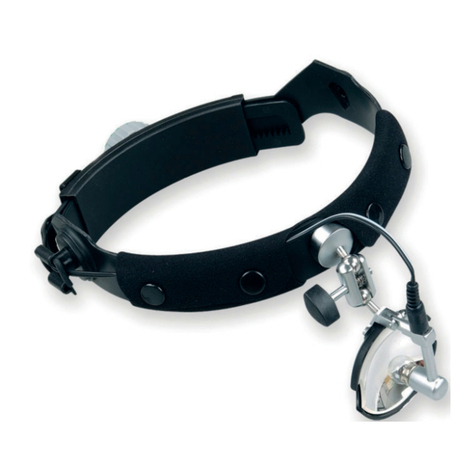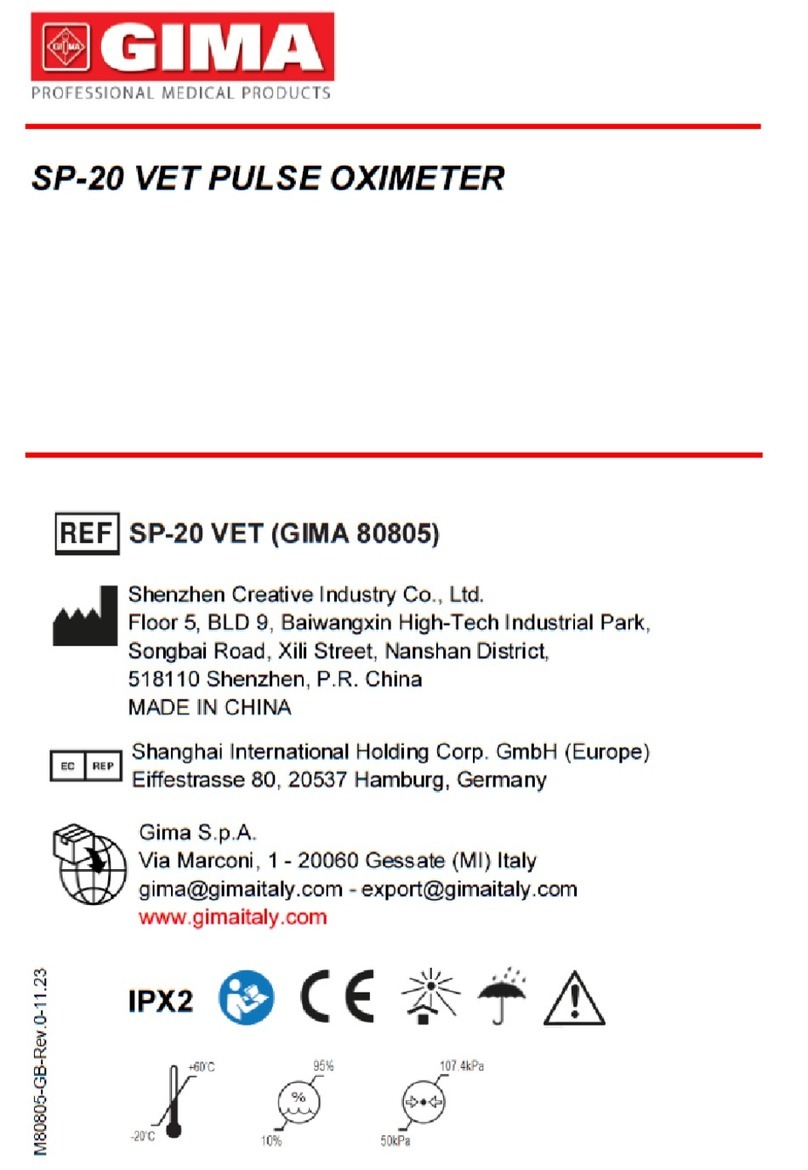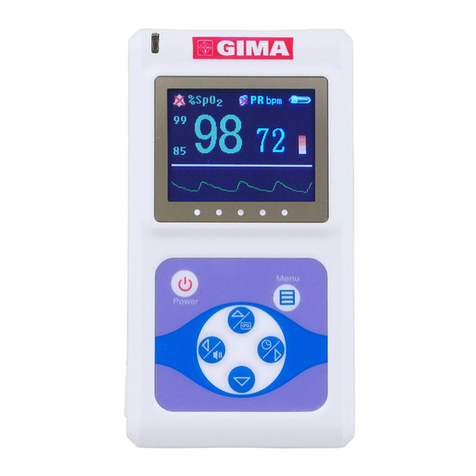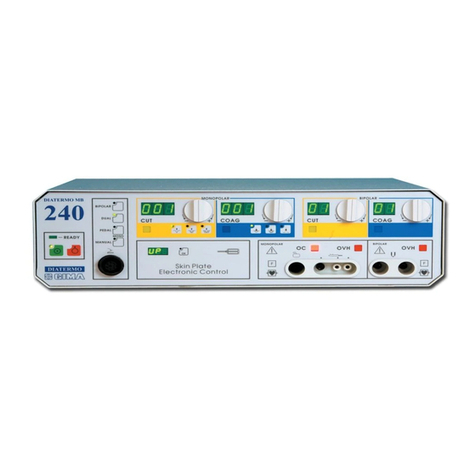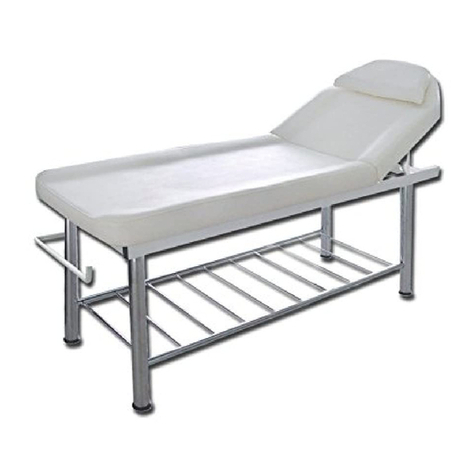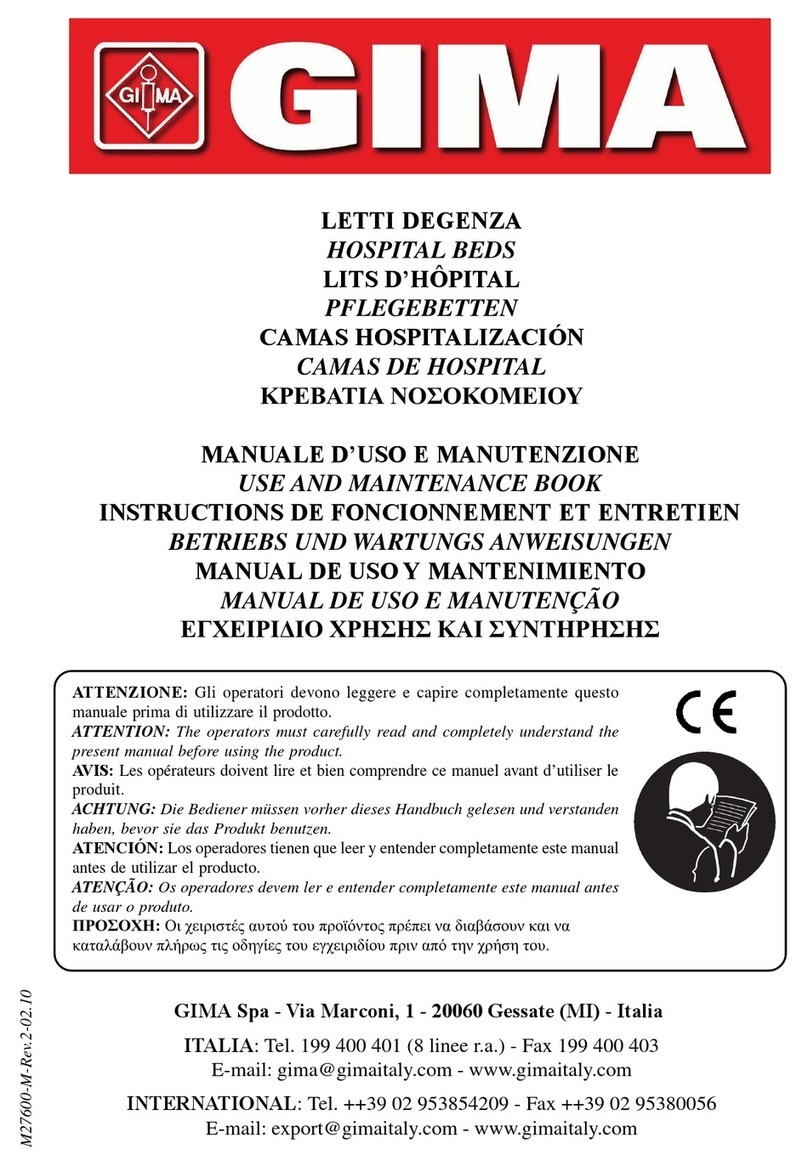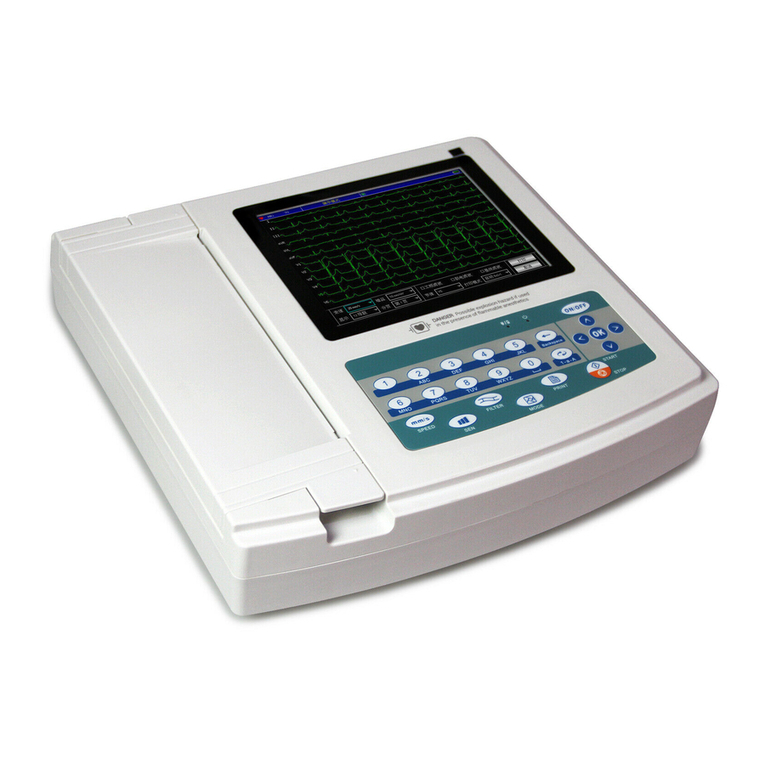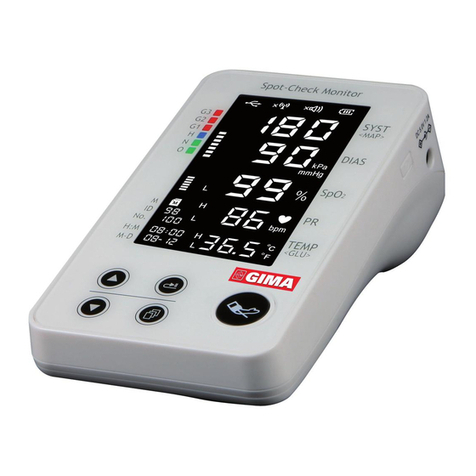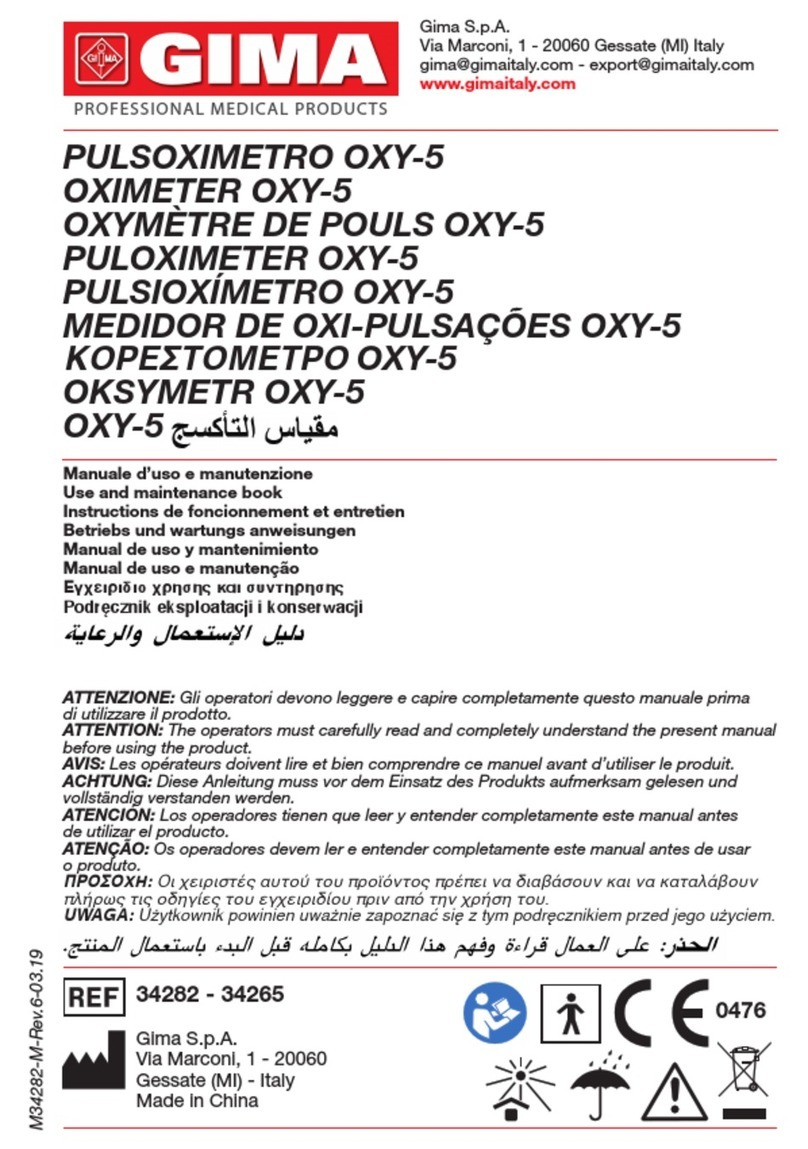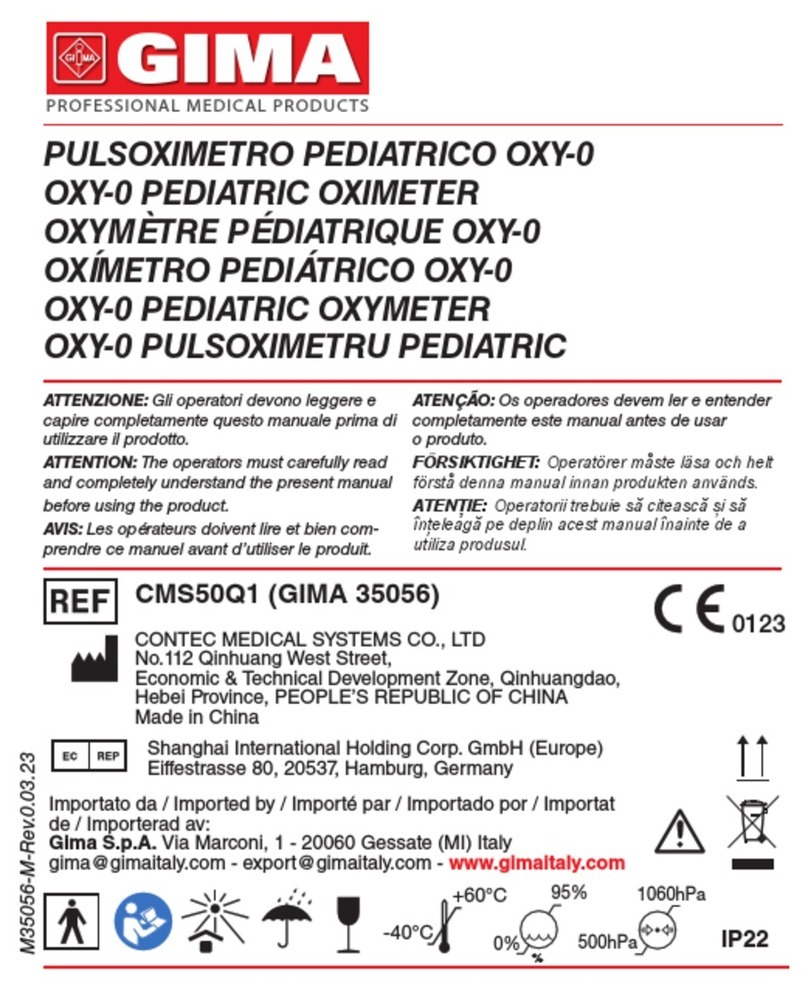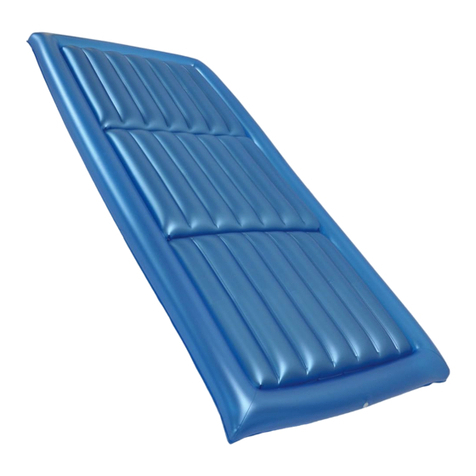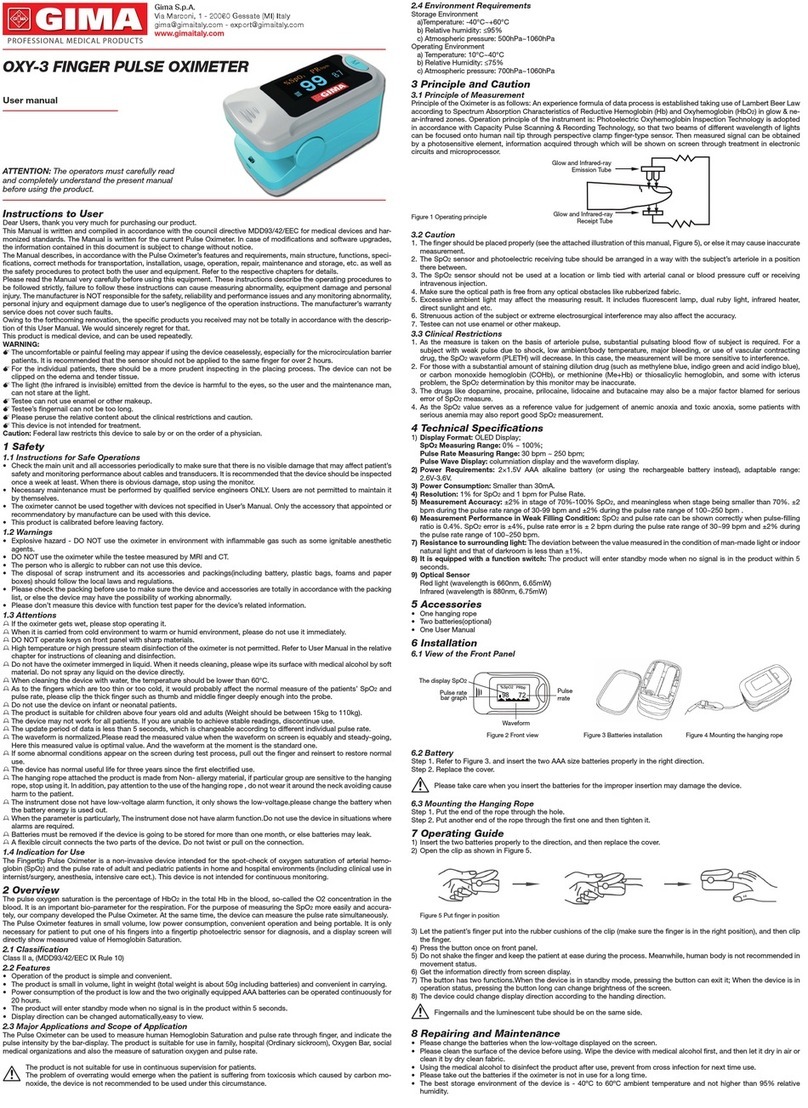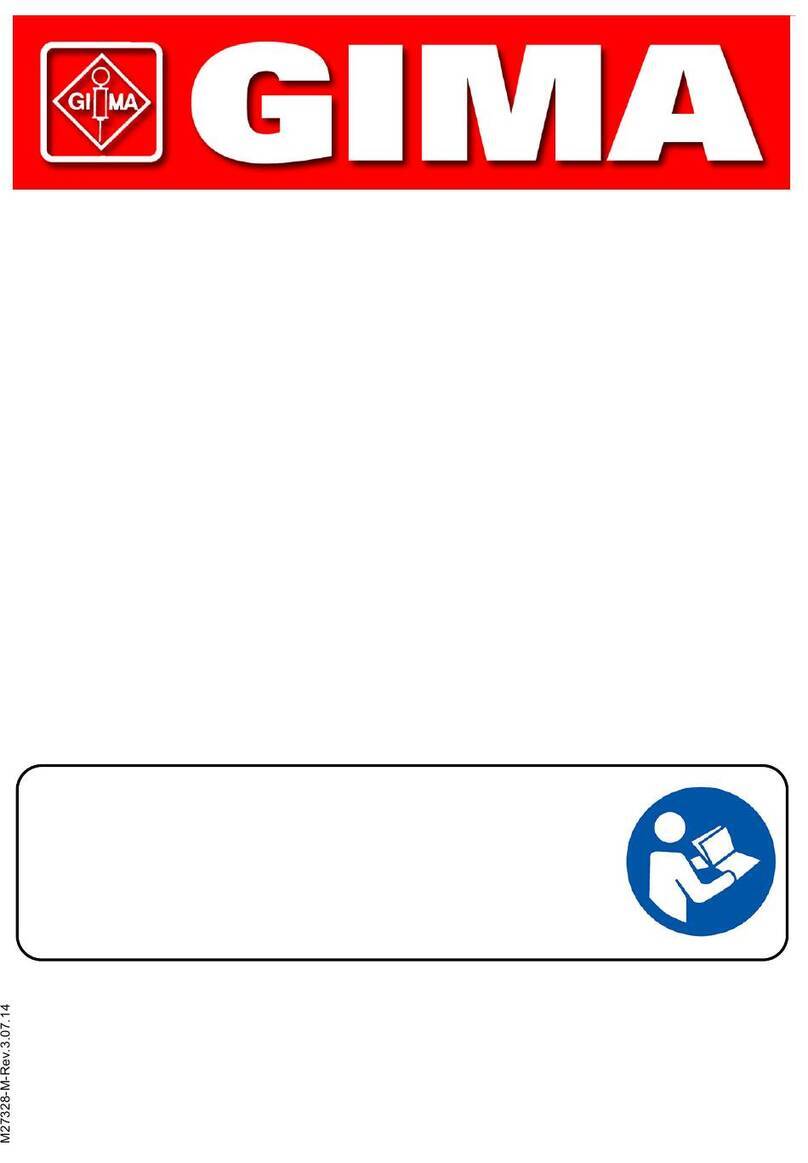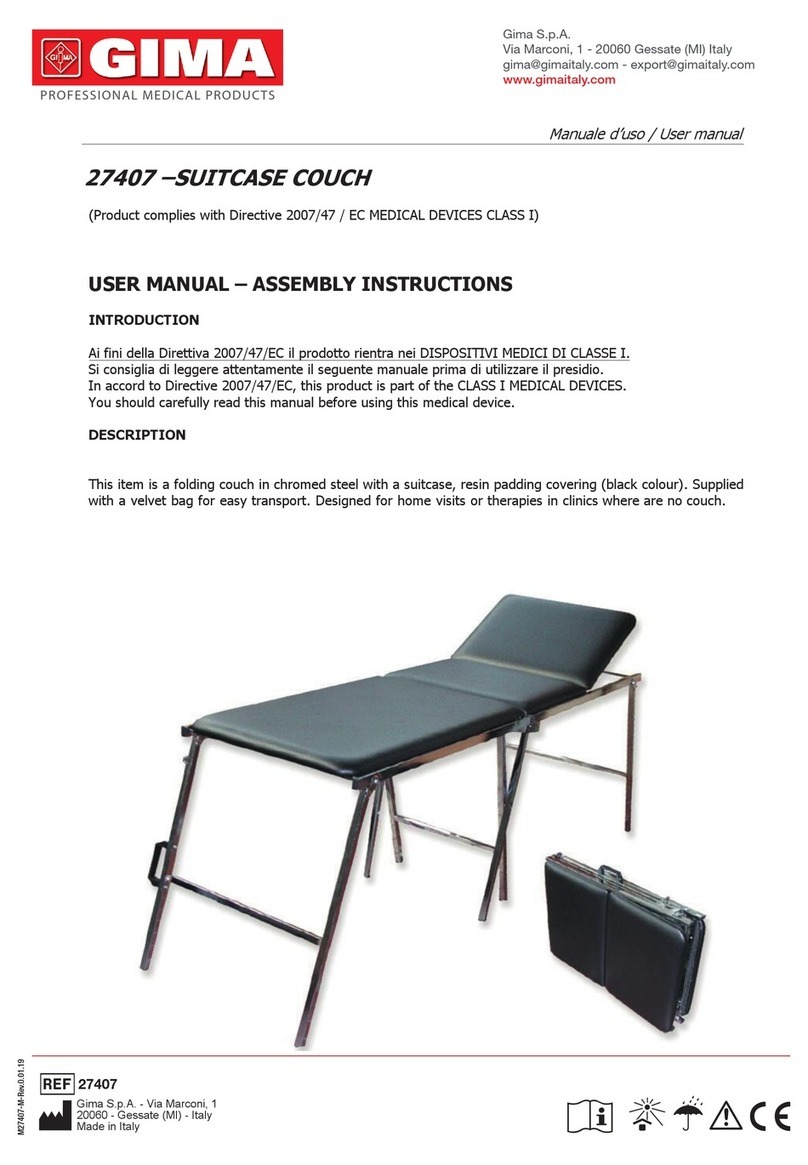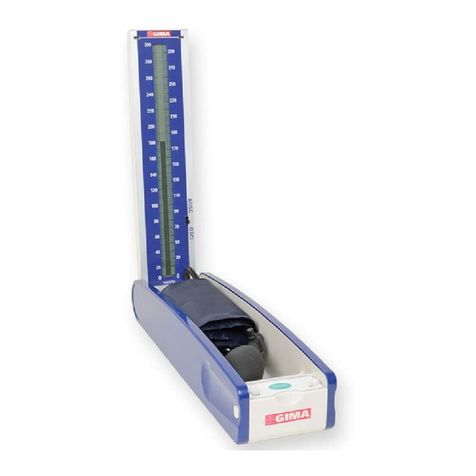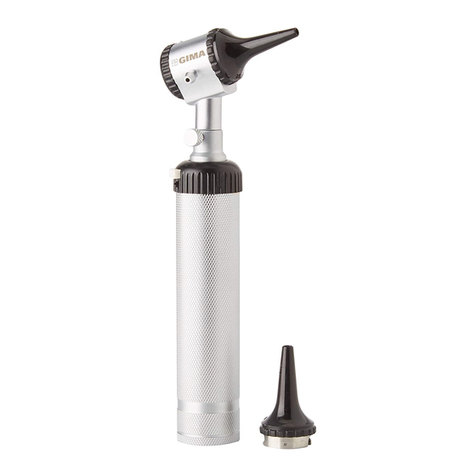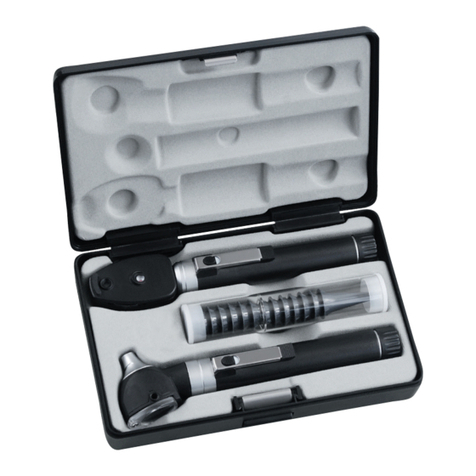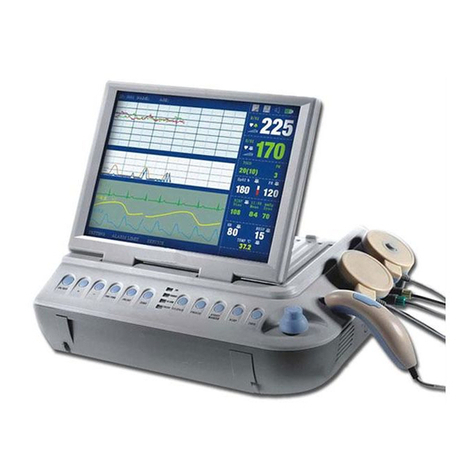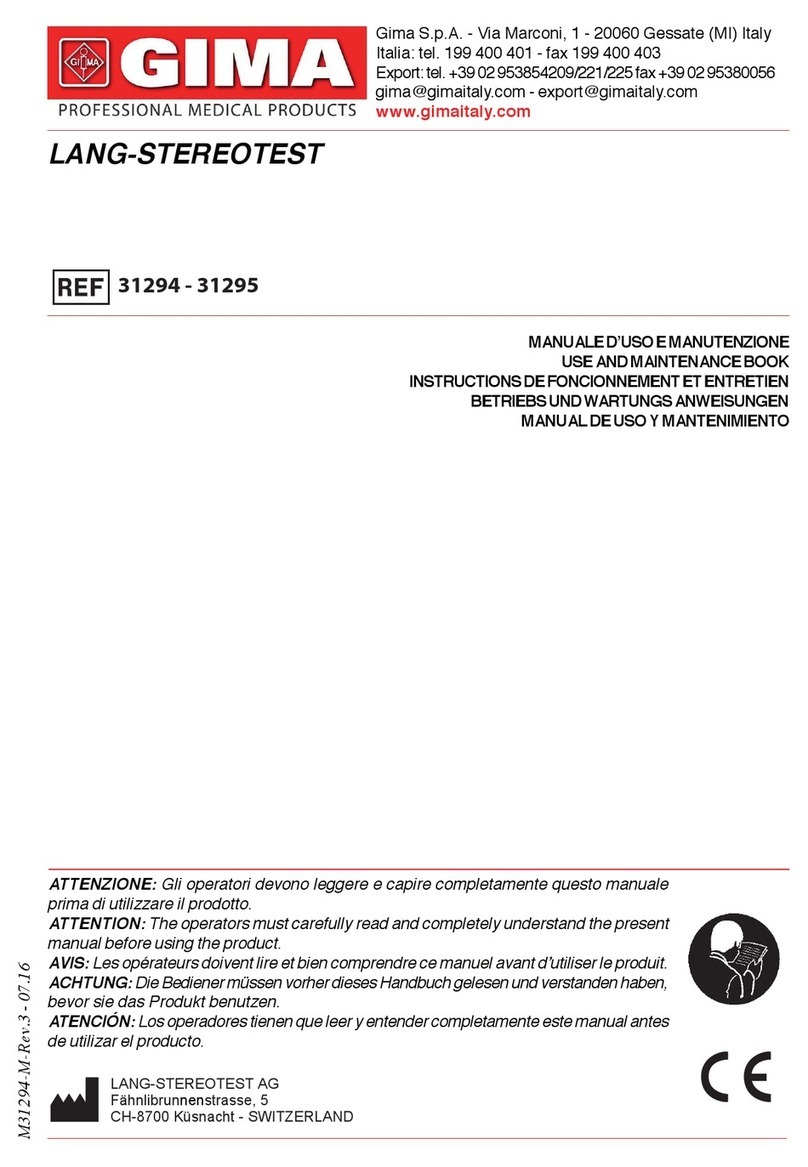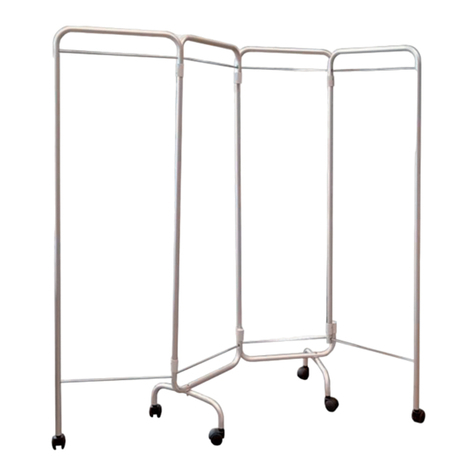
24
electromagnetic interference, such as radio transmitters, mobile telephones,
etc. Keep them far away.
CAUTION: The user must check that the equipment does not have visible
evidence of damage that may affect patient safety or monitoring capability
before use.
The recommended inspection interval is once per month or less. If damage
is evident, replacement is recommended before use.
CAUTION: The following safety checks should be performed once every
two years or as specied in the institution’s test and inspection protocol
by a qualied person who has adequate training, knowledge, and practical
experience to perform these tests.
• Inspect the equipment for mechanical and functional damage.
• Inspect the safety relevant labels for legibility.
• Verify that the device functions properly as described in the instructions for
use.
• Test the patient leakage current according to IEC 60601-1: Limit: 10 uA (CF).
The leakage current should never exceed the limit. The data should be recorded
in an equipment log. If the device is not functioning properly or fails any of the
above tests, the device has to be repaired.
CAUTION: The battery must be properly disposed: The battery must be
properly disposed according to local regulation
CAUTION: The device shall only be used if the battery cover is closed.
Battery must be stored in cool and dry piace.
If use rechargeable battery, to insure capability and life, please fully charge
batteries before rst use, normally, batteries must be continuously charged
over 14 hours or charged according to the guidance displayed on the bat-
tery.
CAUTION: Please don’t set anode and cathode of the battery wrongly.
CAUTION: The valid period of this product is ve years.
After the service life, please return the products to the manufacture or
disposeal the products according to local regulations.
When cleaning the machine:
CAUTION: Don’t use strong solvent, for example, acetone.
CAUTION: Never use an abrasive such as steel wool or metal polish.
CAUTION: Do not allow any liquid to enter the product, and do not
immerse any parts of the device into any liquids.
CAUTION: Avoid pouring liquids on the device while cleaning.
CAUTION: Don’t remain any cleaning solution on the surface of the device.
ENGLISH
